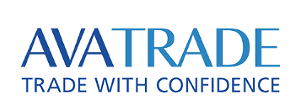Don’t invest unless you’re prepared to lose all the money you invest. This is a high-risk investment and you are unlikely to be protected if something goes wrong. Take 2 minutes to learn more
Overview
As of July 15, 2024, users had invested over $111 billion worth of Ether (ETH) in Ethereum, making it the largest proof-of-stake (PoS) blockchain. As Ethereum’s “security budget,” this staked ETH, which makes approximately 28% of the total supply, can be fined for infractions such as double-spending. Users receive benefits for staking in the form of maximal extractable value (MEV), priority tips, and new ETH issuance.
Demand has exceeded expectations due to the ease of staking ETH, particularly through liquid staking pools. To control this trend, developers are thinking about modifying the protocol’s issuance policies.
Types of Stakers
Home Stakers: Individuals who stake their own ETH (minimum 32 ETH) and run their staking operation from home. They can customize their software configuration.
Remote Stakers: Similar to home stakers, they use cloud services like AWS to run their staking operations.
Hobbyist Stakers: Node operators who accept delegated funds from users through pools but are not primarily focused on managing stakes. They can start with any fraction of ETH. Examples include Lido, Rocketpool, and Puffers Finance.
Professional Stakers: Their primary occupation is managing other users’ stakes, and they can start with any amount of ETH. Examples include Kiln, P2P.org, Allnodes, and Everstake.
Managed Stakers: Users who stake through hobbyists or professional operators or pools. They cannot customize software configurations.
Liquid Stakers: Users who earn rewards by holding liquid staking tokens like stETH, cbETH, and rETH. They also cannot customize software configurations.
Risks Associated with Staking
Various risk factors are involved depending on the technology and method used:
Directly: Using your own staking gear and software is known as “direct staking.” Penalties for downtime and slashing for misconfigurations, which can cost one Ethereum, are among the risks.
Delegated: This involves giving your ETH to a third party. If the staking service defaults on its responsibilities, there is counterparty risk on top of the risks associated with direct staking.
Liquid: Giving away your ETH in exchange for a liquid token is known as liquid staking. Along with liquidity risks like market volatility and delays in validator additions or exits, this strategy entails all the hazards associated with both direct and delegated staking.
Additional Risks
Regulatory Risk: Because staking providers may have to abide by securities laws and AML/KYC procedures, the greater the regulatory risk, the more away an Ethereum holder is from their staked assets.
Protocol Risks: The consequences of breaking Ethereum’s regulations. Among them are:
Offline Penalty: Small daily fines for neglecting obligations.
First Slashing Penalty: 0.5 to 1 ETH fine for breaking the rules, such as submitting two block proposals for a single slot.
Correlated Slashing Penalty: Added fine based on the total amount of stake cut between eighteen days before and following the event, adjusted for the seriousness of the infraction.
Rewards
Through MEV, priority tips, and new ETH issuance, holders of staked Ethereum can earn approximately 4% annual percentage yield (APY). However, as more people are becoming stakers, incentives have been decreasing. Issuance incentives are distributed among more validators as more ETH is staked. Additionally, tips and MEV have fallen as a result of a decline in network transaction activity.
Projections of Rate
In 2024, the staking rate can surpass 30% if demand keeps rising. By avoiding typical entry lines, liquid staking services have made it simpler. But Ethereum can only add so many validators in a single epoch, which causes the rate to gradually rise. To rein in this expansion, developers are thinking about modifying their issuing procedures.
Issue Change Conversations
The developers of Ethereum are looking into ways to keep the staking rate low, like:
Short-Term Drop: To momentarily reduce financial incentives, a 30% drop in staking yields is suggested.
Long-Term Targeting: A novel issuance curve wherein validators incur higher fees when the rate above a predetermined ratio, such as 25%.
In Conclusion
Ethereum’s staking economy is yet in its experimental and developing stages. Policies and rewards have evolved over time, and more adjustments are anticipated. It will get more difficult to apply frequent modifications to staking dynamics as the network gets older. To effectively manage risks and rewards, stakeholders must be informed about these developments.
Make money without lifting your fingers: Start using a world-class auto trading solution
- Broker
- Min Deposit
- Score
- Visit Broker
- Award-winning Cryptocurrency trading platform
- $100 minimum deposit,
- FCA & Cysec regulated
- 20% welcome bonus of upto $10,000
- Minimum deposit $100
- Verify your account before the bonus is credited
- Fund Moneta Markets account with a minimum of $250
- Opt in using the form to claim your 50% deposit bonus
Learn to Trade
Never Miss A Trade Again

Signal Notification
Real-time signal notifications whenever a signal is opened, closes or Updated

Get Alerts
Immediate alerts to your email and mobile phone.

Entry Price Levels
Entry price level for every signal Just choose one of our Top Brokers in the list above to get all this free.





